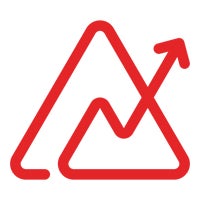
The top BI tools of 2023 are Tableau, Microsoft Power BI, Qlik, Sisense, Zoho Analytics, Google Looker, Domo and Sigma. Compare their pricing, pros and cons to determine which is the best tool for your business.
Business intelligence tools are increasingly vital in the modern business landscape, as they provide crucial insights from data to inform strategic decisions. These tools enable organizations to process and analyze great amounts of data and transform it into actionable insights.
With the growing complexity and volume of business data, the right BI tool can significantly enhance an organization’s ability to make informed decisions, streamline operations and maintain a competitive edge.
Jump to:
Here’s a quick comparison of the top business intelligence tools, focusing on their most significant features and pricing information, which should give you a concise overview to assist in identifying the tool that best suits your business needs.
| Software | Data visualization | Ease of use | Real-time analytics | Cloud-based | Starting price |
|---|---|---|---|---|---|
| Zoho Analytics | Yes | High | Yes | Yes | $22 per month |
| Tableau | Yes | High | Yes | Yes | $15 per user per month |
| Microsoft Power BI | Yes | Moderate | Yes | Yes | $10 per user per month |
| Qlik | Yes | High | Yes | Yes | $20 per user per month |
| Sisense | Yes | Moderate | Yes | Yes | Contact for quote |
| Looker Studio | Yes | Moderate | Yes | Yes | Contact for quote |
| Domo | Yes | High | Yes | Yes | $300 per month |
| Sigma | Yes | Moderate | Yes | Yes | Contact for quote |
Zoho Analytics is a BI software tool particularly favored by small to midsize businesses. Its appeal lies in its affordability and ease of use, which makes advanced analytics accessible to organizations with limited resources or technical expertise.
Zoho Analytics offers a thorough suite of tools that includes data visualization, reporting and analytical capabilities. It also integrates seamlessly with other Zoho products and many external data sources. This paints Zoho Analytics as a great solution for teams looking to leverage data analytics without a significant investment in IT infrastructure.
Zoho offers a 15-day free trial for its cloud-based Analytics service and a 30-day free trial for its on-premises option. Pricing for Zoho Analytics’ cloud deployment is as such:
For businesses wanting an on-premises deployment, Zoho Analytics offers a free plan for personal use as well as the following paid plans:
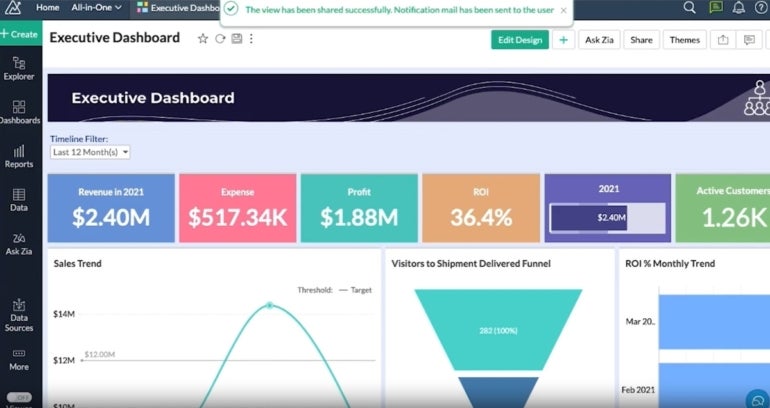
SEE: Discover how Zoho Analytics compares to other top data analytics tools.

Tableau is a leader in the BI tool market, renowned for its advanced data visualization capabilities. With it, users can produce detailed and interactive visualizations, making complex datasets not only understandable, but also actionable.
With its integrability with a wide range of data sources and great mobile support, Tableau is a versatile choice for all sorts of businesses. It also delivers a user-friendly interface that’s supported by powerful back-end analytics.
Tableau offers a 14-day plan users can take advantage of to test out one of its three paid plans:
Pricing and feature availability may differ depending on whether businesses choose a cloud or on-premises deployment. Contact Tableau’s sales team for more information.
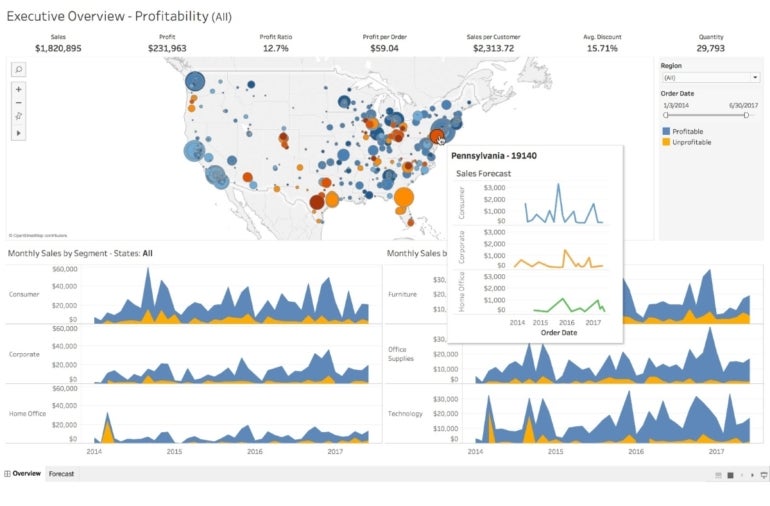
SEE: For more information, explore our in-depth Tableau cheat sheet.

Microsoft Power BI is a business intelligence tool known for its seamless Microsoft integration. It offers a vast feature set that caters to both beginners and advanced users, balancing simplicity with powerful analytics capabilities.
Power BI’s ability to integrate effortlessly with various data sources, especially Microsoft applications, streamlines the data analysis process and enhances productivity and efficiency. Businesses heavily invested in the Microsoft ecosystem should definitely consider Microsoft Power BI.
Microsoft offers a 60-day free trial for the paid versions of Power BI. Pricing for Power BI is broken down as such:
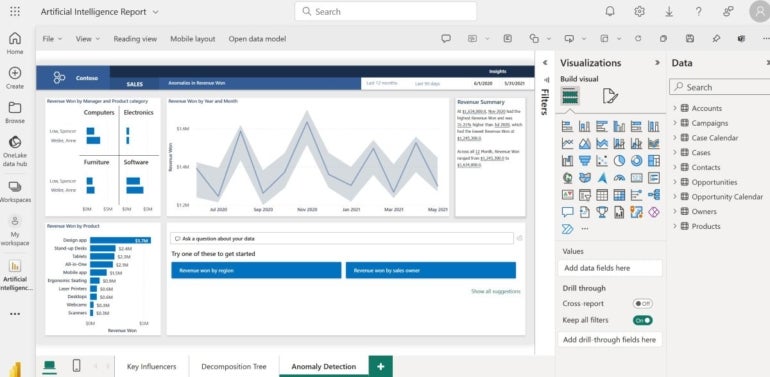
SEE: For more information, read the full Microsoft Power BI review.

Qlik stands out in the BI tool market for its focus on promoting data literacy among users. It’s designed to make data analysis accessible to everyone in an organization, not just data professionals. This approach democratizes data, empowering all users to make data-driven decisions.
Qlik’s associative engine uniquely enables users to explore data connections in multiple directions, uncovering insights that might be missed in traditional linear data exploration.
Qlik offers a 30-day free trial for its paid tiers, which are broken into categories for Analytics and Data Integration. Pricing for Qlik Cloud Analytics is broken down into three tiers:
Qlik’s Data Integration and Quality pricing is organized into three categories:
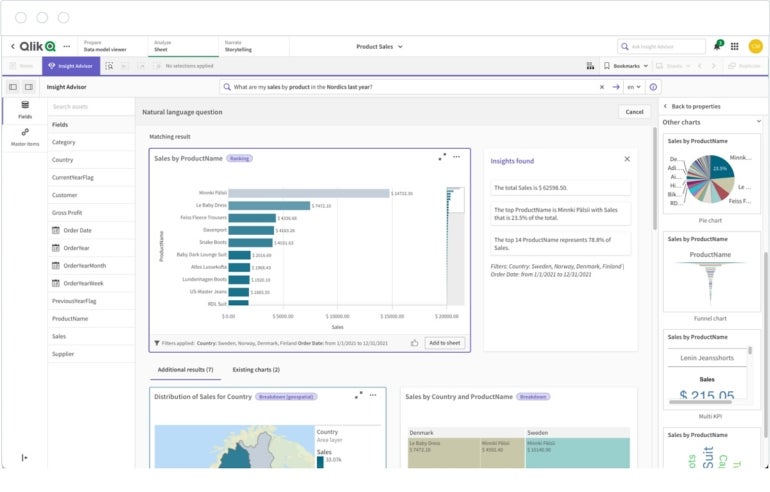
SEE: Check out our comprehensive comparison of Qlik and Tableau.

Sisense is a BI tool that’s exceptionally capable of embedding analytics into various applications. Its approach to BI is to make data insights more accessible and actionable within the context of daily business operations.
Sisense’s platform is designed to handle complex data from multiple sources, making it a robust solution for businesses dealing with large and varied datasets. The tool’s emphasis on embedded analytics makes it worth considering for businesses that require embedded analytics in their operations.
Pricing information isn’t publicly available, so users need to contact Sisense for a quote. Businesses interested in Sisense can check out its available demo.

SEE: Explore how Sisense compares to Power BI.

Google’s Looker Studio is a business intelligence tool that integrates seamlessly with the Google Cloud Platform to offer solid data analytics and visualization capabilities. It stands out for its ability to provide real-time insights and enable businesses to swiftly make informed decisions.
Looker’s approach to BI is centered around making data universally accessible and useful, empowering all levels of an organization to engage with data analytics. With its powerful data modeling language, Looker allows for the creation of sophisticated data models that can cater to the specific needs of different business departments.
Google offers a 30-day free trial to those interested in trying Looker Studio before committing to a contract. Pricing for Looker Studio is broken down like so:
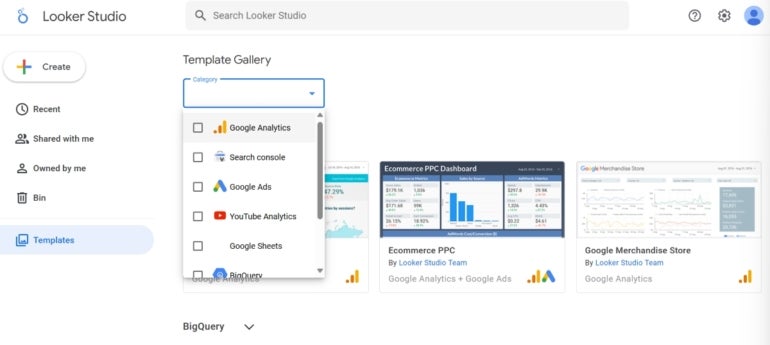
SEE: For more information, check out our beginner guide for Looker.

Domo optimizes business operations through data by offering a unique blend of features that cater to both technical and non-technical users, making it a versatile choice for various business sizes and types.
Domo’s platform is designed to connect, transform and visualize data from multiple sources, providing a unified view of business performance. Its real-time data processing capabilities enable businesses to react swiftly to market changes. Additionally, Domo’s collaborative features foster a data-centric culture within organizations that improves decision-making processes across departments.
Domo offers a 45-minute expert-led demo for interested businesses. Businesses that like Domo can choose between four tiers:
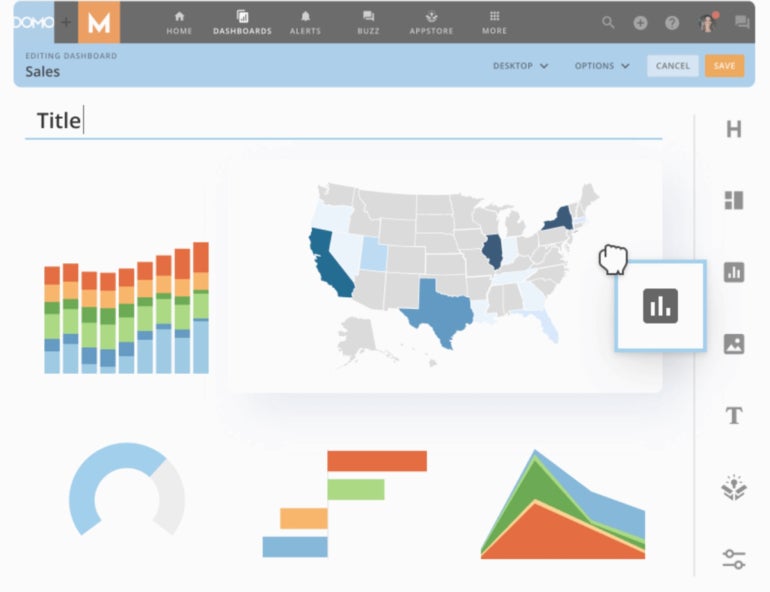

Sigma stands out for its excellent cloud data exploration. It’s designed to make the most of cloud data warehouses, providing users with the ability to explore, analyze and visualize data directly in the cloud. With this approach, there’s no need for traditional data extraction processes, which enables faster and more efficient data analysis.
Sigma’s user-friendly interface, similar to familiar spreadsheet applications, makes it accessible to a broad range of users, from business users to data analysts.
Businesses interested in Sigma can take advantage of its seven-day free trial, but they will need to contact sales for pricing information.

To choose the best BI software for your business, you need to understand the needs, challenges and goals of your business. Some of the factors that you need to prioritize include ease of use, data processing capabilities, integration with existing systems and cost. A great BI tool should seamlessly integrate with your existing data sources, regardless of whether they are on-premises, cloud-based or both. It should also be easy to use, especially if your users are nontechnical. Organizations should consider cost, which cuts across licensing, implementation and maintenance.
SEE: Explore these tips for developing a business intelligence strategy.
Tools like Tableau and Qlik are excellent for businesses needing advanced data visualization, while Microsoft Power BI and Zoho Analytics offer more affordable options with comprehensive features. Assessing how each tool aligns with your business goals and the support provided by the vendor is crucial.
Our review of these eight business intelligence tools was based on their features and pricing, which helped us compare them to determine their benefits and drawbacks. Through the information on their respective websites, datasheets and their blogs, we arrived at a comprehensive understanding of how each tool delivered its features.
We compared this information to reviews from real-world users to understand how users interact with the software and their experiences with each tool. We then tested the tools where possible to see whether they lived up to what they stated on their websites, and to compare our own experience to that of other users.